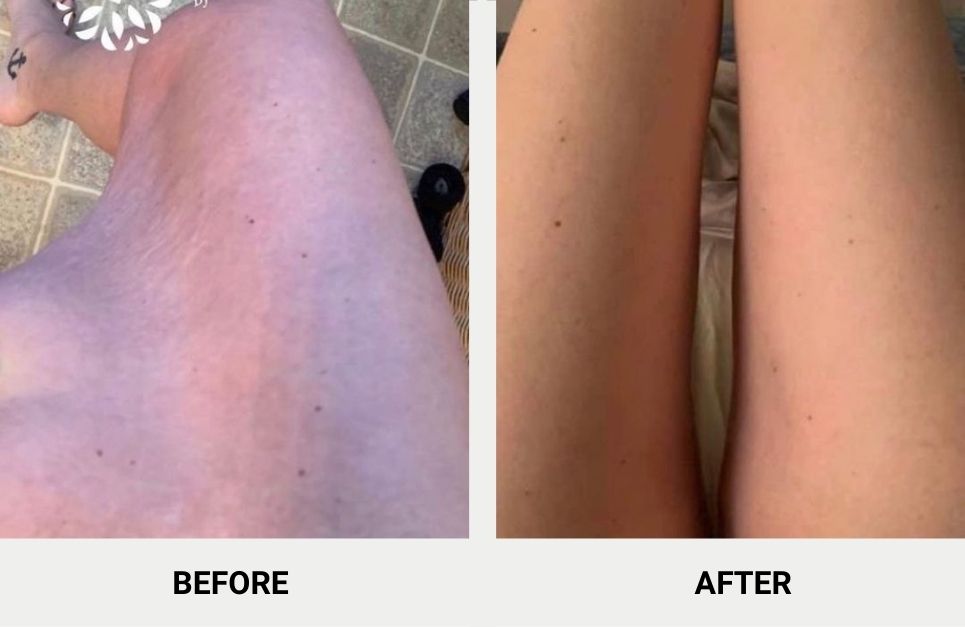Individuals who have excess sagging skin on their thighs after losing a large amount of weight, such as after having weight loss surgery, may feel that they have traded one undesirable situation for another. An inner thigh lift can solve this problem and give you slimmer, more naturally-contoured thighs.
What Is An Inner Thigh Lift?
Most bariatric surgery patients end up with loose excess skin after they experience a significant weight loss. Individuals can also end up with some loose saggy skin in the inside thighs due to the natural process of aging.
The medical term used to indicate the inner thigh where your thighs touch is the medial thigh. The term used to describe the outer portion of your thigh is the lateral thigh. An inner or medial thighplasty is a cosmetic surgery that removes extra loose skin and fat from the medial thigh.
There are a few different procedures that can be used on the thighs to correct saggy skin, however, the medial lift eliminates excess thigh skin as well as fat from the inside of the thigh.
How Is An Inner Thigh Lift Done?
The inner thigh lift consists of two parts but they are performed during the same surgical procedure. The surgery is performed under general anesthesia so the patient is asleep throughout the entire process. The surgeon will start with liposuction to remove as much excess fat as possible followed by the removal of the excess skin.
Liposuction is done on the thigh to create a smooth natural-looking upper thigh area. A small incision is made in the patient’s inner thigh and tumescent fluid is introduced through the incision into the thigh.
Tumescent fluid is a mixture of different medicines that will help minimize blood loss and help to remove the fat more easily. Some surgeons may use ultrasound liposuction to break up the fat which yields a faster recovery than traditional liposuction but both use a special medical instrument called a cannula to suction out the unwanted fat.
One reason that liposuction is needed during a thigh lift is that when the incision is sutured back together, it creates a nice tight smooth fit. Body fat does not have the ability to stick to itself or be sutured together so it has to be removed to ensure a smooth sleek finished look. This method also helps the wound heal faster with less swelling.
After the excess fat is removed from the thigh area, the surgeon begins the second part of the procedure. The incision used to remove the excess skin will vary by patient and the extent of the skin removal.
The surgeon may make the incision as close to your groin crease as possible or it may extend from the knee up into the groin area then the skin on the thigh is pulled up tight and the excess is removed. The incision is closed using multiple layers of sutures and bandaged.
What Types of Thigh Lifts Can Be Done?
There are a few different types of thigh lifts that can be done depending on the extent of loose skin and excess fat that need to be addressed.
Medial Thigh Lift
This is a surgery used often for patients who have experienced a significant weight loss. An incision is usually made straight down from the inner part of the leg near the groin and can extend to the knee if there is sagging skin around the calves to eliminate. A medial thigh lift is often done with thigh liposuction which not only promotes faster healing but also provides better aesthetic results.
Crescent Thigh Lift
This is another procedure that is performed on the inner thigh. It is a great option for patients whose loose saggy skin is concentrated in the inner thigh area (where the thighs rub together) if they do not have excess skin near the calves or outer thighs.
An incision is made where the thigh meets the groin just inside where a bikini would cover it. A moon-shaped piece of skin is removed and the loose skin is lifted, pulled up, and tightened. One of the benefits of this type of thigh lift is the scars are more easily concealed.
Lateral Thigh Lift
A lateral thigh lift is used to remove excess skin and fat from the outside of the upper thigh. This is often combined with a butt lift or a tummy tuck with the surgeon just using one long incision.
The technique used on the outer thighs is more difficult because the skin and fat on that part of the leg tends to be very heavy and dense, requiring a highly skilled surgeon. Lateral thigh lifts are the least performed of the different thigh lift procedures.
Spiral Thigh Lift
A spiral thigh lift, also sometimes known as a 360-degree thigh lift, combines the techniques of both the inner and outer thigh lifts. The surgeon makes an incision under the buttocks and goes up to around the inner part of the thigh and out to the hip area. The surgeon is able to correct many areas at the same time and remove as much fat and excess skin as needed.
What Is Thigh Lift Recovery Like?
Depending on the extent of your thigh lift surgery your recovery will be at least two weeks or more. Your surgeon will provide you with aftercare instructions that will give you tips and pointers for how to care for yourself for the next few weeks and give you a prescription for pain medication to help you be more comfortable.
You will not be able to drive for at least 2 weeks and you will need someone to drive you home from your procedure and stay with you for at least a week or more as you recover. You should make arrangements prior to your surgery If you have small children or pets that need walking, etc.
Recovering From An Inner Thigh Lift At Home
When you get home, all surgeons will encourage walking short distances several times a day to avoid blood clots. Normally you will go home from surgery with small tubes, which are used for drainage, embedded in the incisions. The surgeon will remove them at one of your follow-up visits when they are no longer needed.
The entire area is then covered in bandages and a compression garment your surgeon has provided or recommended to you. You will need to wear this garment according to the surgeon’s directions but normally it is about 4 weeks.
As you recover, you will have to be very careful not to put any kind of stress on your thighs. Avoid excess motion, except your slow walks or trips to the bathroom, and quick movements. Even though there are layers of sutures, this area is very delicate and you do not want to pull apart your stitches.
Depending upon which type of thigh lift you’ve had you may be able to return to work at a desk job after two weeks. After an inner thigh lift, patients can normally resume activities that are non-strenuous at about 4 weeks. By the 6-week mark, most patients can resume all of their usual activities.
How Soon Are Surgical Thigh Lift Results Visible?
The results of a surgical thigh lift are visible immediately because fat and sagging skin will be gone. The areas will be swollen which will disguise the final appearance for a while. At the six-week point, you should have a good idea of what your sleeker, firmer thighs look like.
Are The Results Of An Inner Thigh Lift Permanent?
The results of a medial thigh lift should be permanent if your current weight is maintained. Unfortunately, even the most skilled surgeon cannot stop the natural aging process so you may experience changes as you get older. The good news is there are several non-surgical skin tightening treatments that can be done as a touch-up if needed.

Will I Have Scarring From An Upper Thigh Lift?
Yes, but the scarring will be different depending on which type of thigh lift you undergo. The surgeon will take every measure to conceal the incision line but there will be scars. It is important to keep your healing incisions out of the sun as it will accentuate the scars and they will darken.
Scar creams or vitamin E and cocoa butter will help mitigate scarring. After your scars have had about a year to heal, you can pursue cosmetic treatments to lessen their appearance. Microneedling and radiofrequency treatments can significantly reduce the appearance of scarring from a thigh lift.
Are There Non-Surgical Procedures Available For A Thigh Lift?
For patients that do not have a significant amount of loose skin, a non-surgical thigh lift may be a perfect solution. There are a few different types of procedures that are available that yield excellent results:
- Bodytite utilizes radiofrequency assisted lipolysis (RFAL) to eliminate excess fat deposits and tighten the surrounding skin during the same procedure. Immediate results can be seen and continue to improve as the natural production of new collagen and elastin occur.
- Evolve is the name that describes a family of three contouring treatments that do not require surgery. Evolve Tite, Evolve Trim, and Evolve Tone each have a specific area of expertise and can be used as single procedures or together for optimal results. These procedures can shape and firm up loose crepey skin while also eliminating stubborn fat deposits. They are safe for all skin types, are painless, and require no downtime.
- PHYSIQ uses a combination of heat and electrical stimulation (STEP therapy) to contour, firm, and reshape areas such as the upper thighs. This non-invasive procedure targets muscles and fat simultaneously resulting in noticeably tighter, smoother, defined thighs.
- Morpheus8 uses both radiofrequency and microneedling at the same time can reshape the upper thigh area creating more defined contours and tighter skin. It can be used by most patients and most skin types. Usually, the best results can be seen after 3 treatments. Morpheus8 provides long-lasting results.
If you are interested in a surgical thigh lift or a non-surgical skin tightening procedure, contact IBI Plastic Surgery & Med Spa , A division of IBI Healthcare Institute, to set up a personal consultation. Dr. Angelina Postoev, MD, FACS, a triple-board certified cosmetic surgeon, and Christopher Ibikunle, MD, FACS, offer both surgical and non-surgical thigh lifts for men and women in Lawrenceville, Suwanee, Johns Creek, Buckhead, and the surrounding areas of Atlanta, Georgia.







